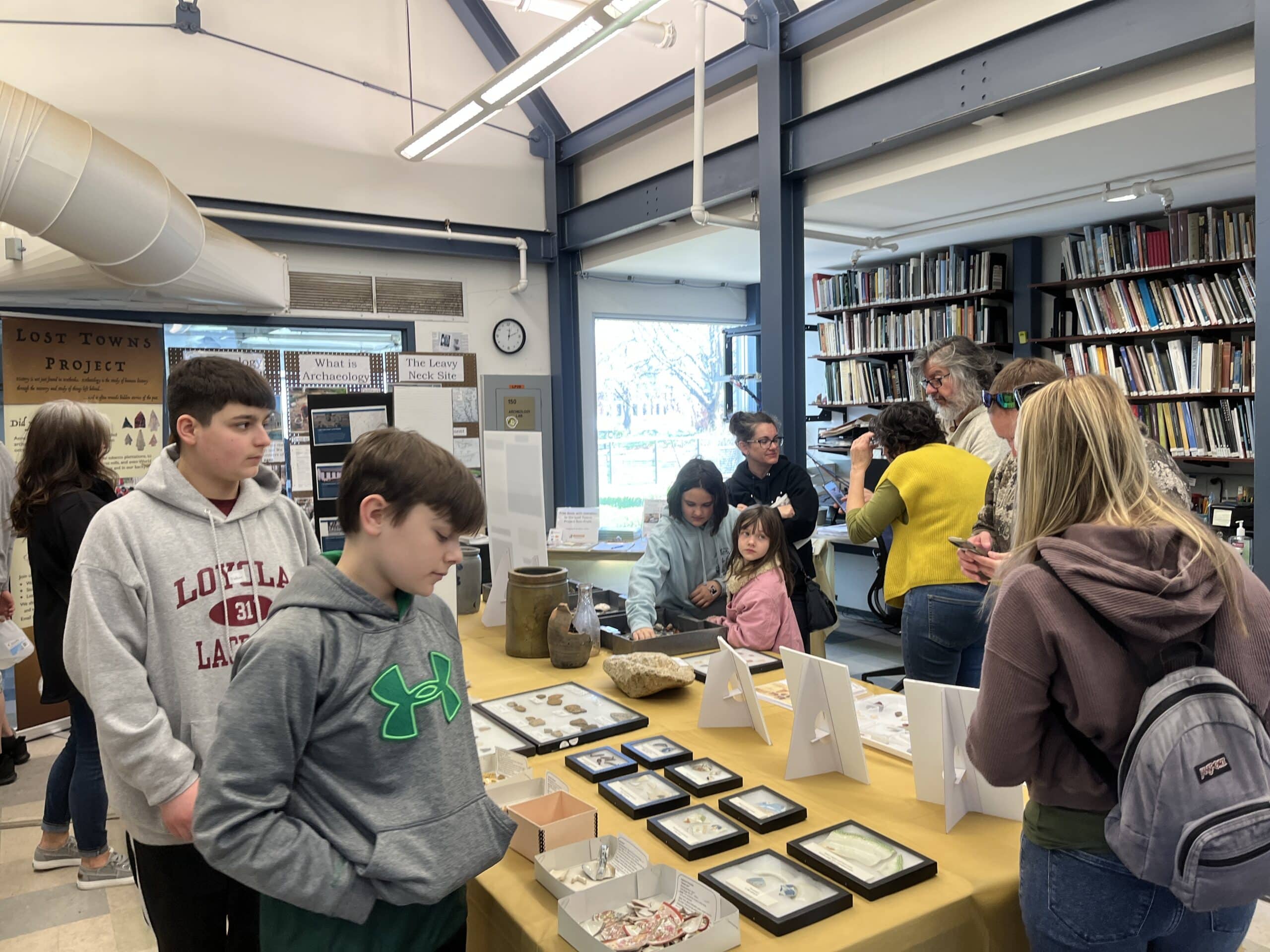Hands on History: A Visit to the Anne Arundel Archaeology Laboratory and The Lost Towns Project
By Hess Stinson
My curiosity leads me to the best places. Recently, I took up the opportunity to volunteer at the Anne Arundel Archaeology Lab (https://www.aacounty.org/departments/planning-and-zoning/cultural-resources/archaeological-sites/Museum), an experience that left me in awe of the rich history hidden beneath the surface of our everyday lives. As I held fragments of objects that were once essential to people’s daily routines, I couldn’t help but feel a deep connection to the past and a profound appreciation for the work of archaeologists in uncovering these stories. As someone who embarked on independent heritage work before joining the Chesapeake Crossroads team, this experience could not have been better served.
“The Anne Arundel County Archaeology and History Resources Center is a public archaeological laboratory at the County-owned Historic London Town and Gardens. Staff and consultants work alongside volunteers and students to share the story of Anne Arundel County’s archaeological rediscovery.”

Walking into the archaeology lab, I was immediately struck by the reverence for local history permeating the space. The office space reminded me of something from an adventure film at entry. Computers were teaming with research, and two staff members along with two interns took their chairs and congregated at a table with scores of glass pipes on top, discussing the artifacts unearthed at the most recent dig. The director greeted me with kindness and enthusiasm, followed by a flash training on how archeological digs are organized and how to clean the artifacts. I was graciously guided through the process of archaeological digs in Maryland and the lab’s history rooted in Londontowne. The director’s passion for unearthing history was contagious, and I eagerly absorbed every detail she provided.
A Hands-On Experience
To my delight (and expectation), I was offered the opportunity to assist in cleaning off some of the artifacts recovered from recent excavations. I got to work immediately at the processing station behind the office space. There, another volunteer sat at one of the multiple sinks across from columns of neatly organized artifacts – both processed and bags of unprocessed finds – all carefully labeled and cataloged, whispered tales of lives long gone. It was as if the ghosts of those who had inhabited this land were reaching out to me through these tangible remnants of their existence. With delicate precision, I carefully scrubbed away layers of dirt from pieces of pottery, metal fragments, and shards of glass. As I worked, I marveled at the thought that these seemingly insignificant remnants could hold the key to understanding the lives of those who came before us.
There was something incredibly grounding about holding these fragments of everyday life. No matter how small or seemingly insignificant, each object had a story waiting to be pieced together into a more extensive artifact of understanding. These artifacts were once essential to the people who used them, whether they were tools they depended on or objects they took for granted in their daily lives. It was a humbling reminder that our existence is part of a much larger tapestry woven together by the threads of countless generations.
The clogged dirt on the artifacts served as a tangible link to the past, carrying the echoes of the earth, the people, and the plants that have contributed to the world we inhabit today. It was a vivid reminder that our present reality is built upon layers of existence, each generation leaving its mark on the land we call home.
Reflections on the Past
As I cleaned off the artifacts, I couldn’t help but feel a sense of excitement for the discoveries that lay ahead. Volunteers and archaeologists like those at the Anne Arundel Archaeology Lab are crucial in piecing together the puzzle of our shared history. Each cleaned artifact has the potential to offer insights into the lives and culture of the people who once inhabited this region, enriching our understanding of the past. My visit to the Anne Arundel Archaeology Lab left me with a deep appreciation for the meticulous work and dedication of those who dedicate their lives to unearthing history.
The Lost Towns Project at the Anne Arundel Archaeology Lab provided me with a therapeutic, unique, and unforgettable experience that allowed me to connect profoundly with the past. Holding and cleaning artifacts gave me an almost spiritual understanding of the lives and stories buried beneath our feet. I am grateful to have had the opportunity to contribute, in a small way, to preserving our shared heritage. The lab is open to volunteers most Tuesdays and Wednesdays between 10:00-3:00; click here to set up your visit to the Anne Arundel Archaeology Lab. Note: the lab is located on the premises of Historic London Town and Gardens.

